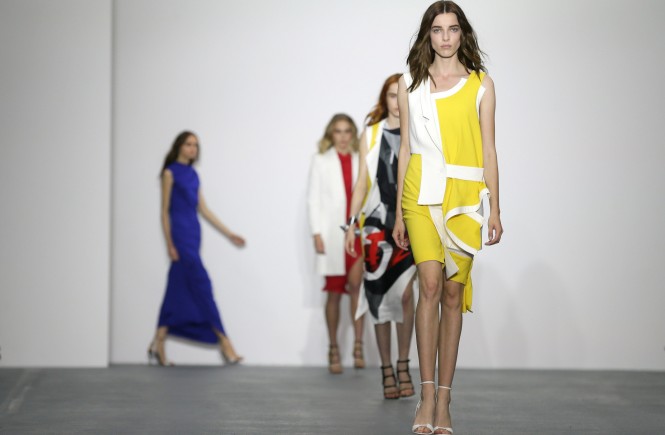Fashion, an ever-changing canvas, reflects the spirit of different eras, societies, and cultures. From the opulent elegance of the Victorian era to the rebellious spirit of the 1960s, each period has left its indelible mark on the fashion landscape. The journey from vintage to modern trends is a captivating exploration of how clothing has evolved, intertwining with societal shifts, technological advancements, and artistic movements. In this article, we will delve into the rich tapestry of fashion, examining critical periods and their influence on the styles we embrace today.
1. The Elegance of Vintage: The Allure of Timeless Classics
The term ‘vintage’ brings a sense of nostalgia and timeless elegance to mind. Vintage fashion typically refers to clothing from a previous era that retains charm and quality. One must acknowledge the influence of the Victorian era to discuss vintage fashion. In the 19th century, luxury and modesty converged in intricate dresses adorned with lace, corsets, and voluminous skirts. The Victorian silhouette was characterised by its emphasis on a tiny waist and a full, bell-shaped skirt, reflecting the societal values of the time.
Moving into the early 20th century, the Roaring Twenties ushered in a new era of liberation and rebellion. The flapper style emerged, rejecting the restrictive corsets and embracing a more relaxed silhouette. Shorter hemlines dropped waists, and a penchant for extravagant accessories became the defining elements of this period.
The 1940s and 1950s witnessed a return to sophistication and femininity. The wartime austerity of the 1940s gave way to the glamorous ‘New Look’ introduced by Christian Dior in 1947. With nipped waists and full skirts, Dior’s designs celebrated a return to luxury and embraced the classic hourglass figure.
2. The Revolutionary 1960s: A Cultural Explosion in Fashion
The 1960s marked a turning point in fashion, mirroring the time’s social upheavals and cultural shifts. The youth-driven counterculture, fueled by the anti-establishment sentiments of the era, gave birth to revolutionary styles that rejected the conventions of the past. The influence of music, art, and political movements was unmistakable in the fashion of the 1960s.
The iconic miniskirt, popularised by British designer Mary Quant, became a symbol of the youth movement and a rejection of conservative values. The psychedelic prints and bold colours of the era reflected the experimental and liberating spirit of the time. The rise of youth-oriented subcultures, such as the Mods and the Hippies, introduced unconventional styles that challenged the status quo.
In contrast to the previous decades’ structured and polished looks, the 1960s embraced a more casual and carefree approach to fashion. Bell-bottom pants, tie-dye shirts, and fringe-accented accessories became synonymous with the free-spirited ethos of the era. The influence of icons like Twiggy and the Beatles further propelled these unconventional styles into the mainstream.
3. The Minimalist 1990s: Embracing Simplicity in a Complex World
As the fashion world moved into the 1990s, a stark contrast to the bold and eclectic styles of the 1980s emerged. The minimalist movement took centre stage, characterised by simplicity, clean lines, and a focus on functionality. Designers like Calvin Klein and Jil Sander championed a less-is-more aesthetic that resonated with the changing attitudes of the time.
The grunge fashion trend, popularised by bands like Nirvana, brought an anti-establishment ethos to the forefront. Flannel shirts, ripped jeans, and combat boots became a generation’s uniform that rejected the previous decade’s excesses. The fashion industry responded by incorporating grunge elements into high fashion, blurring the lines between streetwear and couture.
At the same time, the rise of supermodels like Kate Moss and the dominance of ‘heroin chic’ aesthetics challenged traditional notions of beauty. The emphasis shifted from glamorous and polished looks to a more raw and edgy appeal. The 1990s witnessed a democratisation of fashion, with street style and individual expression taking precedence over rigid fashion norms.
4. Modern Trends: Where Tradition Meets Innovation
In the 21st century, the fashion landscape is a dynamic fusion of tradition and innovation. The digital age has transformed how we consume and engage with fashion, blurring geographical boundaries and democratising access to style. Social media platforms, fashion blogs, and online retail have shaped trends and influenced consumer choices.
Fast fashion, characterised by quick production cycles and affordable, trend-driven pieces, has become a dominant force in the industry. While it offers accessibility and a constant influx of new styles, it raises concerns about sustainability and ethical practices. The push for sustainable and ethical fashion has gained momentum, with designers and consumers advocating for responsible practices that prioritise environmental and social responsibility.
The concept of ‘slow fashion’ has emerged as a counterpoint to the fast fashion model, promoting quality over quantity and encouraging mindful consumption. Designers are increasingly exploring innovative materials and production methods to reduce the fashion industry’s environmental impact. Vintage and second-hand shopping has also gained popularity as conscious consumers seek alternatives to the throwaway culture promoted by fast fashion.
Conclusion
The evolution of fashion is a testament to the ever-changing nature of human expression. From the elegance of vintage styles to the rebellious spirit of the 1960s, each era has imprinted on the fashion landscape. The minimalist movement of the 1990s and the dynamic trends of the 21st century reflect the ongoing dialogue between tradition and innovation.
As we navigate the complex web of trends and styles, we must appreciate the threads that connect us through time. Fashion is not merely about clothing; it reflects societal values, cultural shifts, and individual expression. By understanding the roots of fashion evolution, we can make more conscious consumer choices and contribute sustainably.




